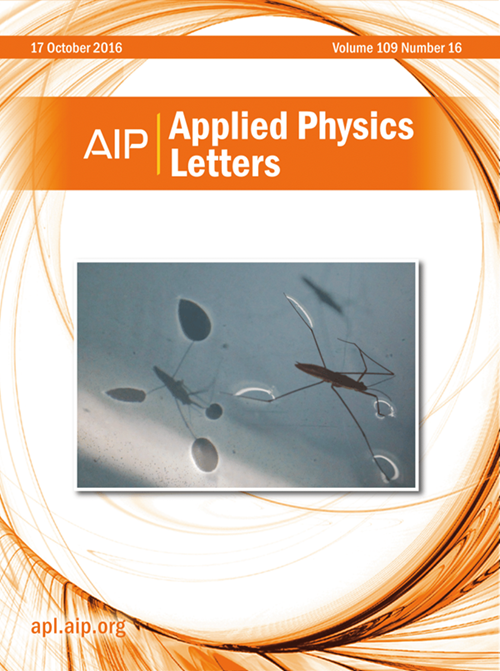Wavelength-insensitive and fast photothermoelectric response in magnetic-Weyl-semimetal Co3Sn2S2 crystals
IF 3.5
2区 物理与天体物理
Q2 PHYSICS, APPLIED
引用次数: 0
Abstract
We systematically characterize the photothermoelectric (PTE) effect of pristine and Se-doped (4%, 8%, and 11%) Co3Sn2S2 crystals, a magnetic-Weyl-semimetal, on electromagnetic-wave wavelength and temperature. The photovoltages of these Co3Sn2S2 crystals are insensitive to the electromagnetic-wave wavelength, with 23% variance, in bands ranging from 444 to 1550 nm. Remarkably, the 4%-Se doped Co3Sn2S2 demonstrates the best PTE performance among these samples, yielding a 22.4 mV/W optical responsivity and a short response time (∼100 ms) under 1550 nm illumination. The photovoltage of Co3Sn2S2 nearly monotonically increased with increasing temperature. The theoretical analyses verify that the wavelength-insensitive PTE response of Co3Sn2S2 comes from the nearly same trend of its wavelength-dependent optical refractive index and extinction coefficient, and the best PTE performance of 4%-Se doped Co3Sn2S2 is attributed to the largest product of Seebeck coefficient and electrical conductivity. This work demonstrates that magnetic Weyl semimetals may be promising for infrared photodetection.求助全文
约1分钟内获得全文
求助全文
来源期刊

Applied Physics Letters
物理-物理:应用
CiteScore
6.40
自引率
10.00%
发文量
1821
审稿时长
1.6 months
期刊介绍:
Applied Physics Letters (APL) features concise, up-to-date reports on significant new findings in applied physics. Emphasizing rapid dissemination of key data and new physical insights, APL offers prompt publication of new experimental and theoretical papers reporting applications of physics phenomena to all branches of science, engineering, and modern technology.
In addition to regular articles, the journal also publishes invited Fast Track, Perspectives, and in-depth Editorials which report on cutting-edge areas in applied physics.
APL Perspectives are forward-looking invited letters which highlight recent developments or discoveries. Emphasis is placed on very recent developments, potentially disruptive technologies, open questions and possible solutions. They also include a mini-roadmap detailing where the community should direct efforts in order for the phenomena to be viable for application and the challenges associated with meeting that performance threshold. Perspectives are characterized by personal viewpoints and opinions of recognized experts in the field.
Fast Track articles are invited original research articles that report results that are particularly novel and important or provide a significant advancement in an emerging field. Because of the urgency and scientific importance of the work, the peer review process is accelerated. If, during the review process, it becomes apparent that the paper does not meet the Fast Track criterion, it is returned to a normal track.
 求助内容:
求助内容: 应助结果提醒方式:
应助结果提醒方式:


